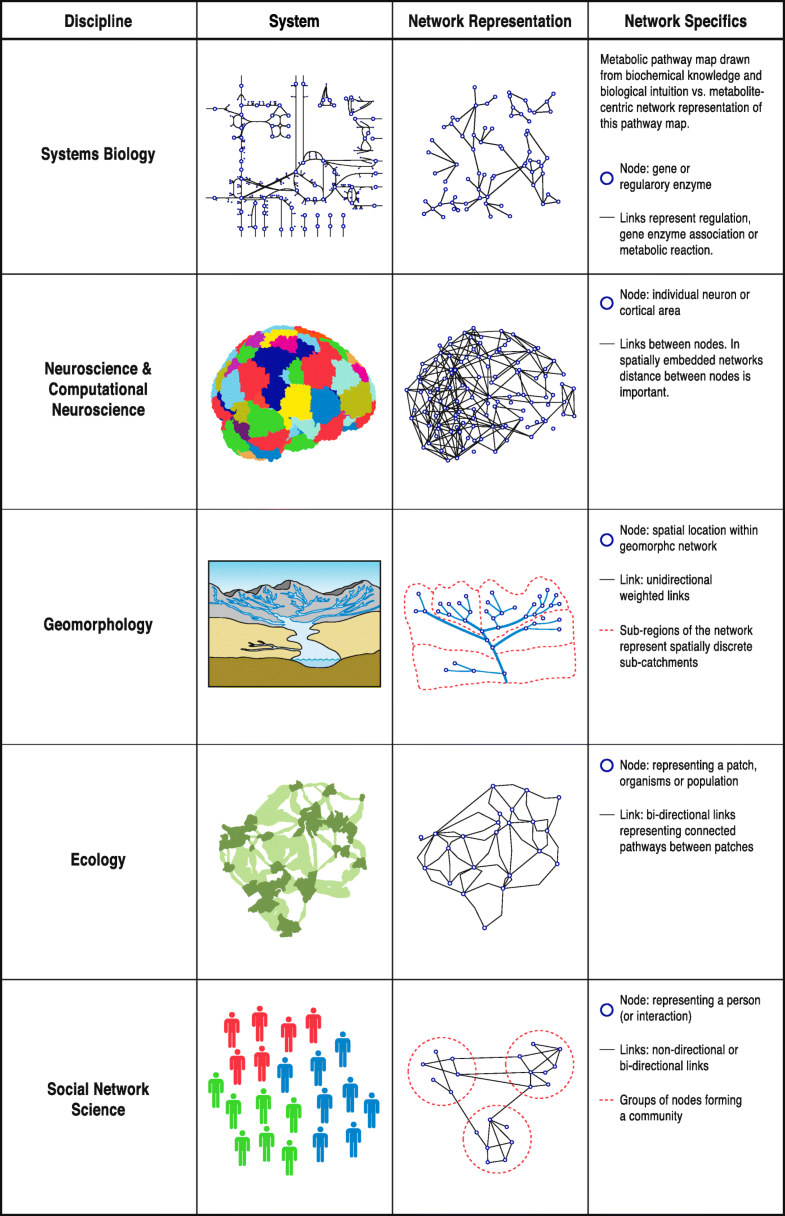Understanding complex systems from different disciplines, writes @Ecohydrology et al., requires appreciating the standpoints of …
- (i) defining the fundamental unit for the study of connectivity;
- (ii) separating structural connectivity from functional connectivity;
- (iii) understanding emergent behaviour; and
- (iv) measuring connectivity.
Here’s a table (detailed text removed from the original article) that compares disciplinary approaches.
Table 1:
Summary of connectivity challenges across different disciplines. Extent to which connectivity challenges are an issue:
- * do not present a challenge;
- ** presents a challenge but progress has been made;
- *** presents a major challenge.
.
Fundamental Unit (FU)
Separating Structural Connectivity (SC) and Functional Connectivity (FC)
Understanding Emergent Behaviour
Measuring Connectivity
Systems Biology
**
**
**
**
Neuroscience
*
**
**
**
Computational Neuroscience
*
**
*
*
Geomorphology
***
***
***
**
Ecology
**
**
**
**
Social Network Science
*
***
***
***
Recognizing Structural Connectivity (SC) as different from (but not exclusive from) Functional Connectivity (FC) is a big start.

Fig. 1 Network-based representation of structural and functional connectivity. Illustration of ways in which structural and functional connectivity within a multitude of systems can be conceptualised using a network-based approach across Systems Biology, Neuroscience/Computational Neuroscience, Geomorphology, Ecology, and Social Network Science
References
- Connectivity and complex systems: learning from a multi-disciplinary perspective | Laura Turnbull, Marc-Thorsten Hütt, Andreas A. Ioannides, Stuart Kininmonth, Ronald Poeppl, Klement Tockner, Louise J. Bracken, Saskia Keesstra, Lichan Liu, Rens Masselink and Anthony J. Parsons | Applied Network Science | 2018, 3:11 https://doi.org/10.1007/s41109-018-0067-2